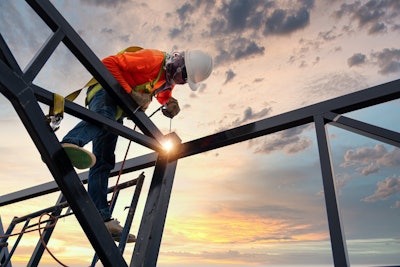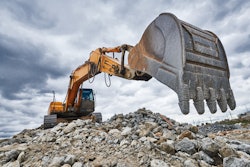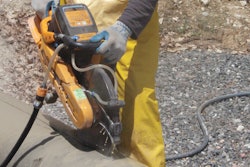
Did you know that first-year employees account for more than 25% of all workplace injuries? That figure, courtesy of the Bureau of Labor Statistics (BLS), highlights a facet of one of the most pressing issues facing the construction industry today—a lack of qualified and skilled workers. According to a model developed by the Associated Builders and Contractors organization, the industry faced a workforce shortage of 650,000 people in 2022. Alongside that labor shortage, ABC also noted the number of entry-level construction laborers has increased 72.8% since 2011.
Less experienced workers can face significant risks in the construction industry, especially in a tight job market. Here’s what you need to know to keep your employees and your business thriving.
Assess and Improve Recruitment and Hiring Practices
Effective hiring practices are a key element of success for any business. Cutting corners to fill positions, and place applicants into the field without sufficient vetting or thorough training, can lead to more than financial risk for your construction business. It may also put people—including your experienced workers and even innocent bystanders—in danger. Here are four key steps you can take to improve your hiring practices.
- Establish and follow written employment guidelines and job qualifications.
- Consult a legal expert to review your company’s recruitment and hiring processes, and make sure they’re compliant with state and federal laws.
- Perform background checks as part of your hiring process, including checking references from past employers.
- Review Motor Vehicle Reports (MVRs) prior to hiring and assigning employees to work in company vehicles
Though you may do your due diligence and follow these tips, employment-related lawsuits can still occur, and bring with them escalating settlement costs that can threaten the financial stability of any company. It’s imperative to consider employment practices liability insurance (EPLI) for your business. This type of coverage can help further protect you and your business if an employee claims employment-related issues like discrimination, wrongful termination, or harassment.
Create a Safer Environment for New Employees
In a tight labor market, you may be tempted to quickly onboard hires and get to work. The BLS notes that most training in the construction industry is short term and on the job. Proper and effective training can help prevent injuries.
In the most recent update from 2020, the BLS notes that 64% of the nearly 70,000 nonfatal occupational injuries and illnesses in the construction industry involved workers with less than five years of experience. Those injuries resulted in an average of 12 days away from work.
The health and safety of your employees is your responsibility. To protect your employees and your business, it’s imperative you build a culture of safety, with procedures and policies that begin even before someone is hired. This can be done in several ways, including:
- Work with your insurer to develop a comprehensive safety plan. Hold regular safety meetings and encourage employees to take ownership by allowing them to lead the meetings and celebrate success. If your team is following the procedures and policies you’ve set forth and you’re seeing the results, recognize it and harness that momentum toward a safer a workplace.
- Perform a worksite analysis to identify areas where injuries occur with greater frequency. Adjust your safety training for new hires according to your findings and retrain current employees.
- Implement effective hazard prevention controls to protect all workers from workplace hazards. These controls will help avoid injuries, illnesses, and incidents, and minimize or eliminate safety and health risks. Make sure you communicate the steps you’ve taken and reinforce the message over time.
- Consider equipping company vehicles with telematics. As noted, you should make it a priority to conduct thorough assessments of MVRs prior to hiring new employees. (Nearly a third—30.9%—of construction workers are required to drive on the job. Driving includes operating passenger vehicles, light trucks, and motor operated equipment.) In addition to that, consider equipping company vehicles with telematics to help monitor safe driving habits. When your employees are on the road, there is so much at stake. Doing what you can to help protect your people and your investments is good leadership and good business sense.
- Lead by example. As part of management, it should be clear you are equally committed to the safety plan you’ve put in place. It sends a clear message to new and longtime employees alike. This includes modeling safe behavior and following proper procedures. Ensure your actions match your policies, like wearing your PPE when necessary and calling out hazards you may see as you walk through construction sites—with positive notes of encouragement for how your team can improve situations. It’s also important to avoid distracting your drivers with phone calls or text messages if they’re out driving your company’s vehicles. Set a standard for everyone else on your team by leading by example.
Consider Conducting a Safety Audit
Once the framework for your program is set, regular safety audits can help you measure its effectiveness over time. You can help control the potential for employee injury, and your costs, by identifying—and addressing—program gaps. Your insurer may have a loss prevention and safety services team that can help you with safety audits, bringing any risks to light before an accident happens.
After your audit, take time to analyze each element of your safety program for potential enhancements—and make a plan of action:
- Address the areas you need to help improve to reduce your accident rates.
- Provide the necessary training and resources for employees, and make changes to your onboarding materials where needed.
Clear communication and collaboration helps everyone on your team understand their role in creating a safer, more productive workplace.
Proactive Policies Protect Employees and Businesses
In a job market where skilled labor is a scarcity, sound hiring practices paired with a robust safety program can help your business reduce its risks. It may even help you save money and keep your projects on schedule in the upcoming year.
Don’t wait until it’s too late to protect your business and your employees. Talk to your insurer or local experts to develop a comprehensive risk management plan that fits your business needs. Together, you can find ways to overcome the current workforce obstacles.



















